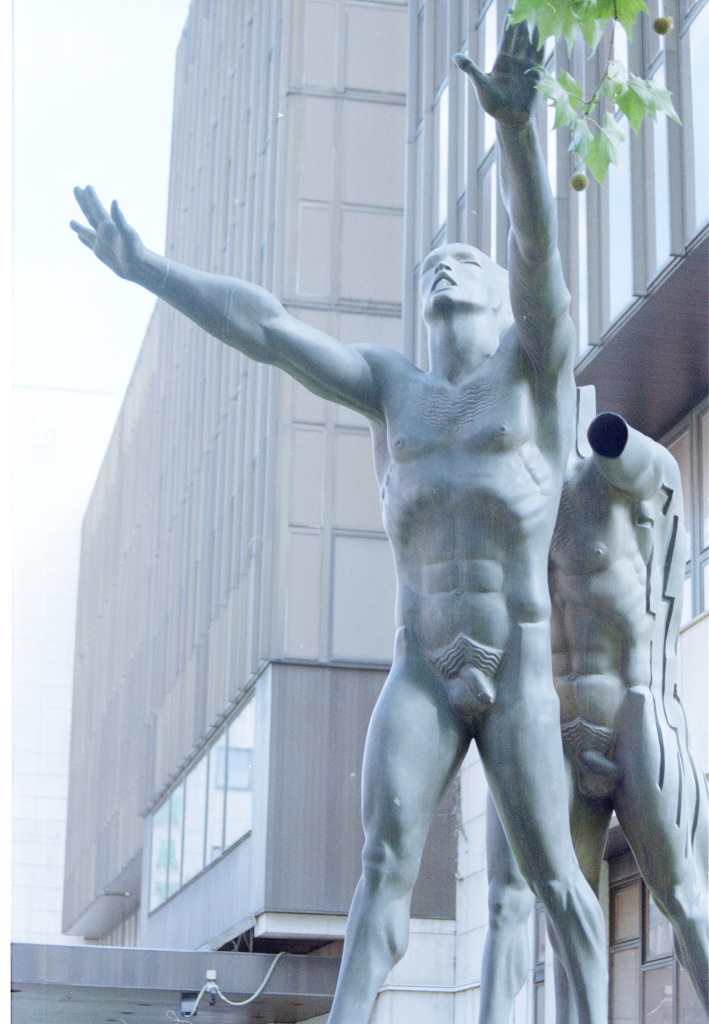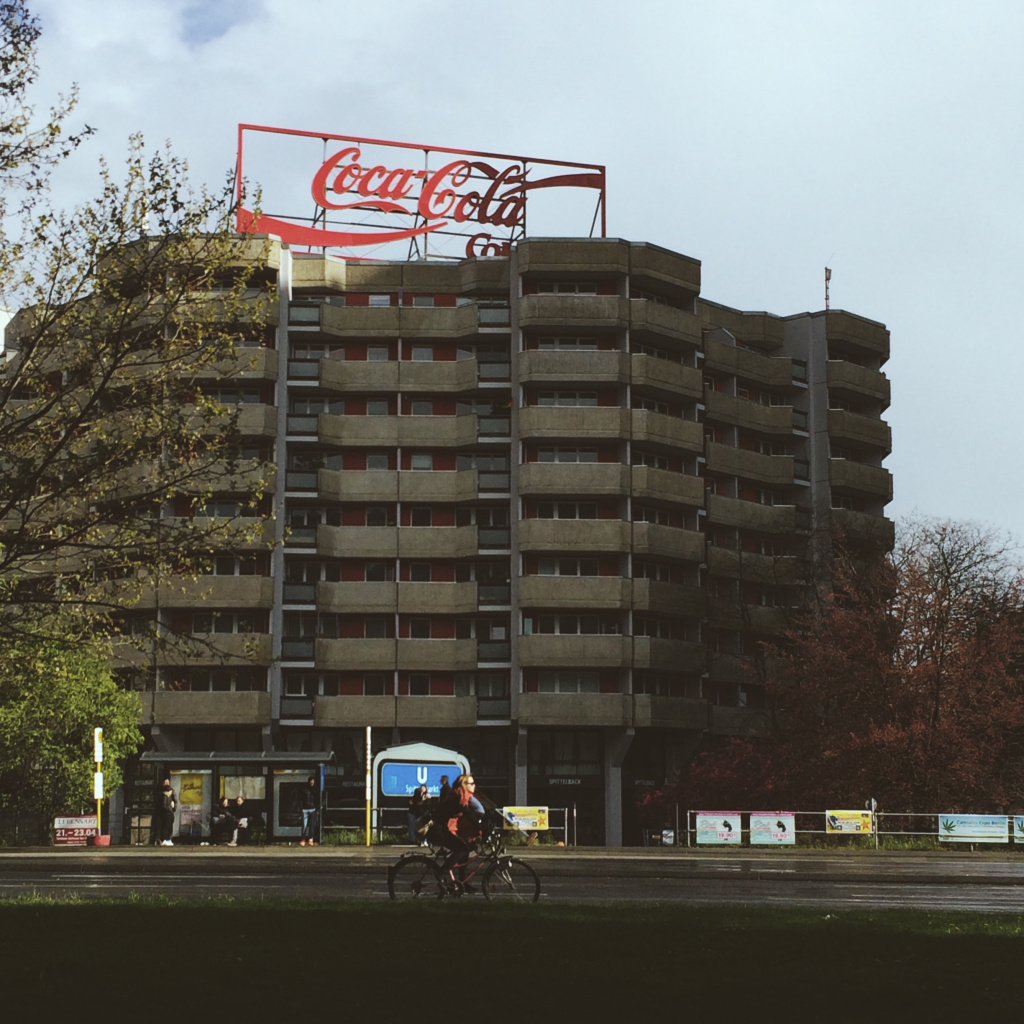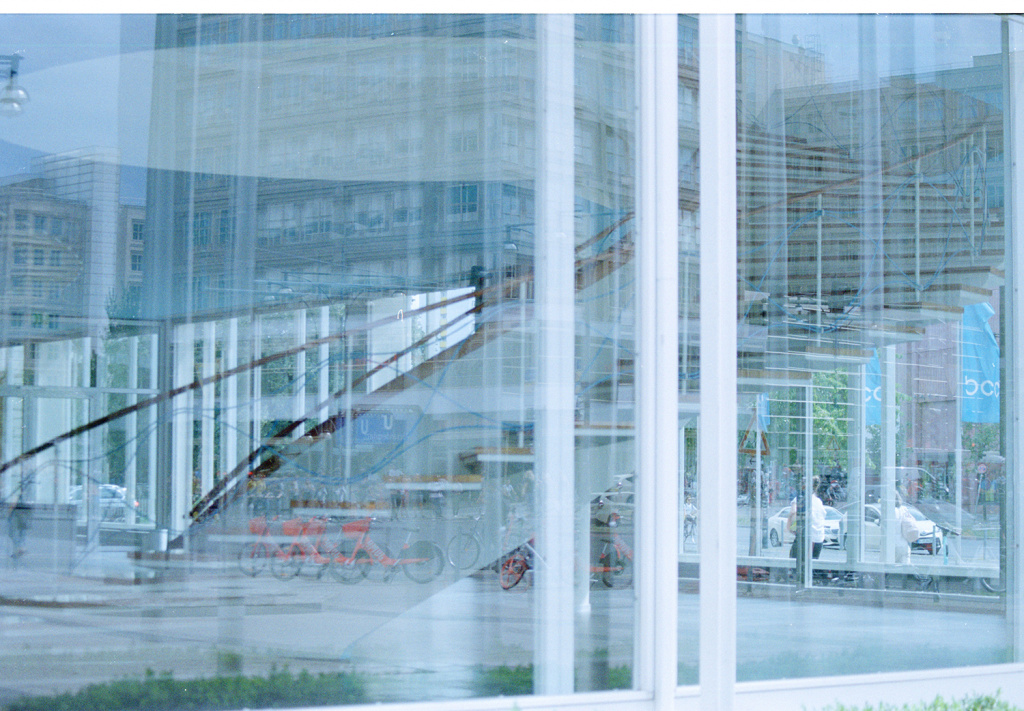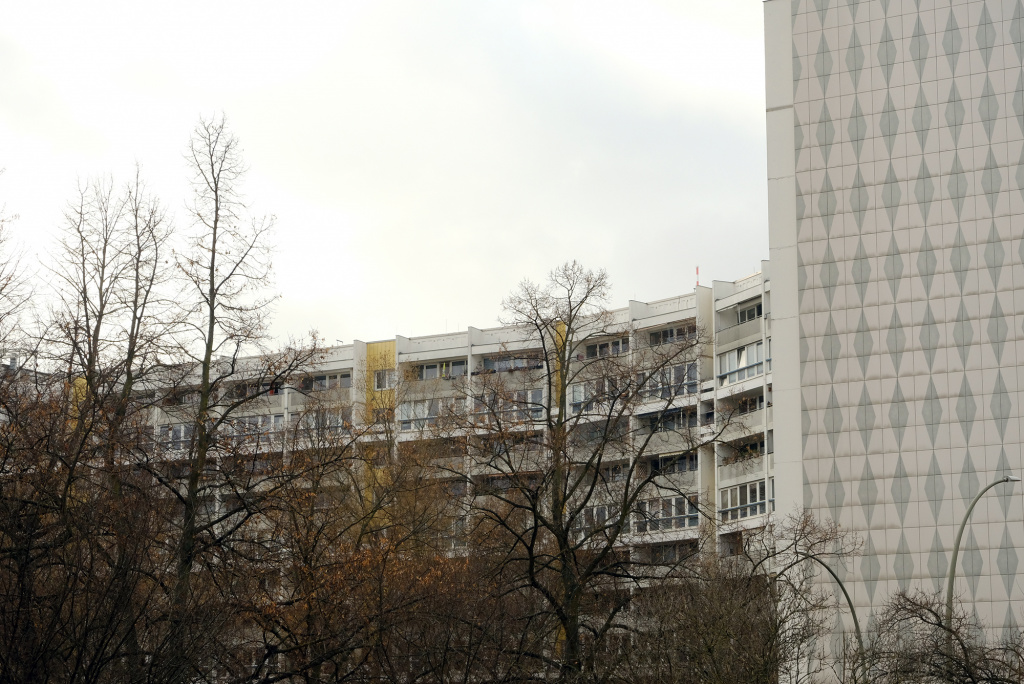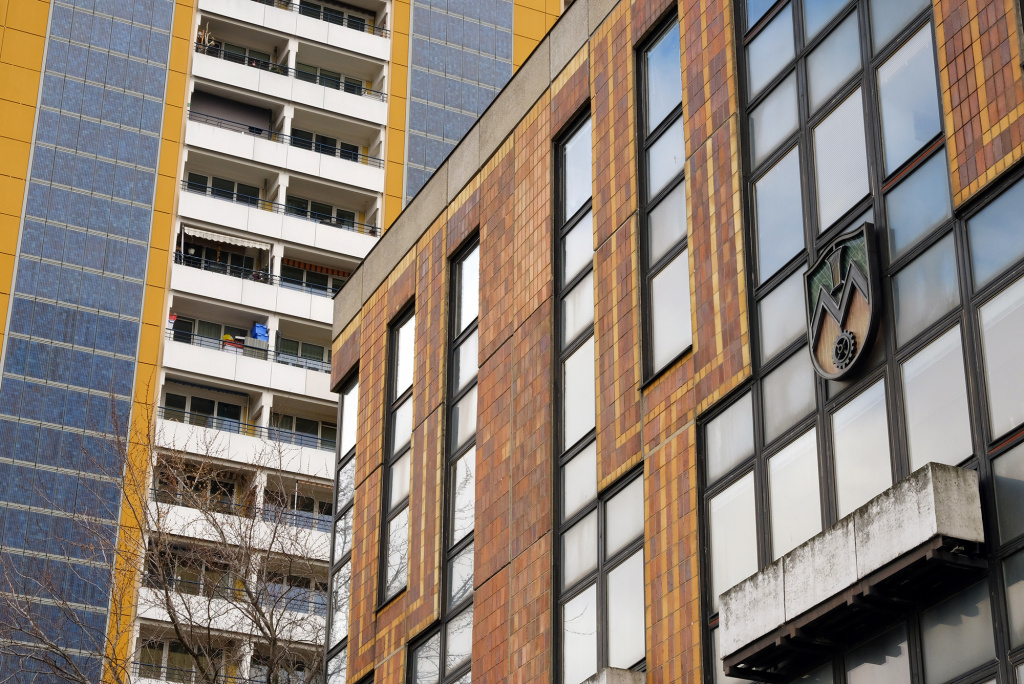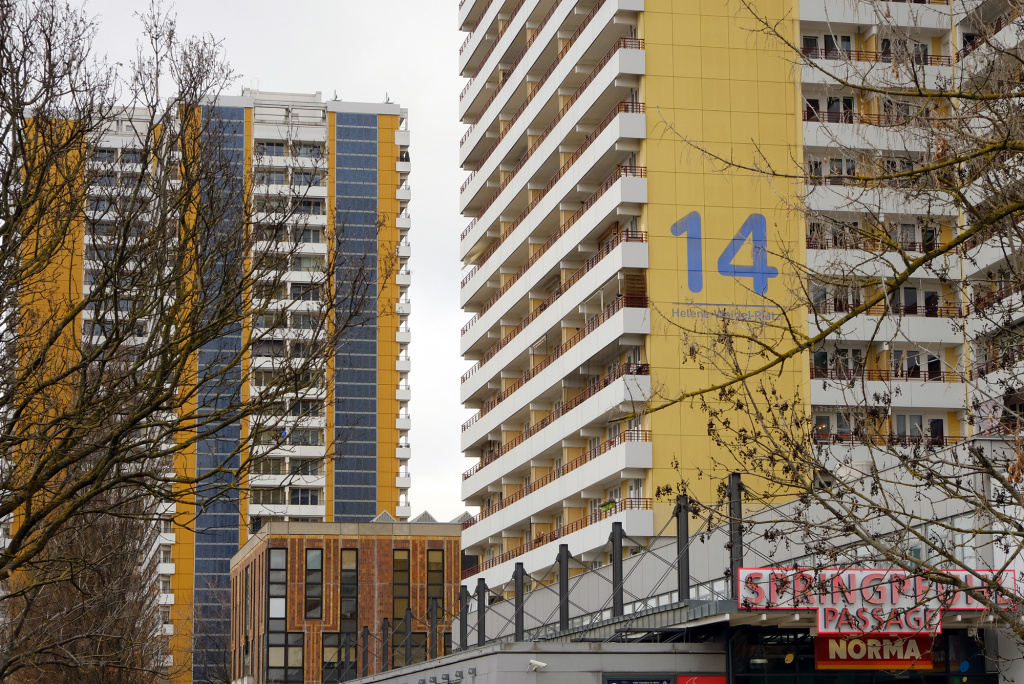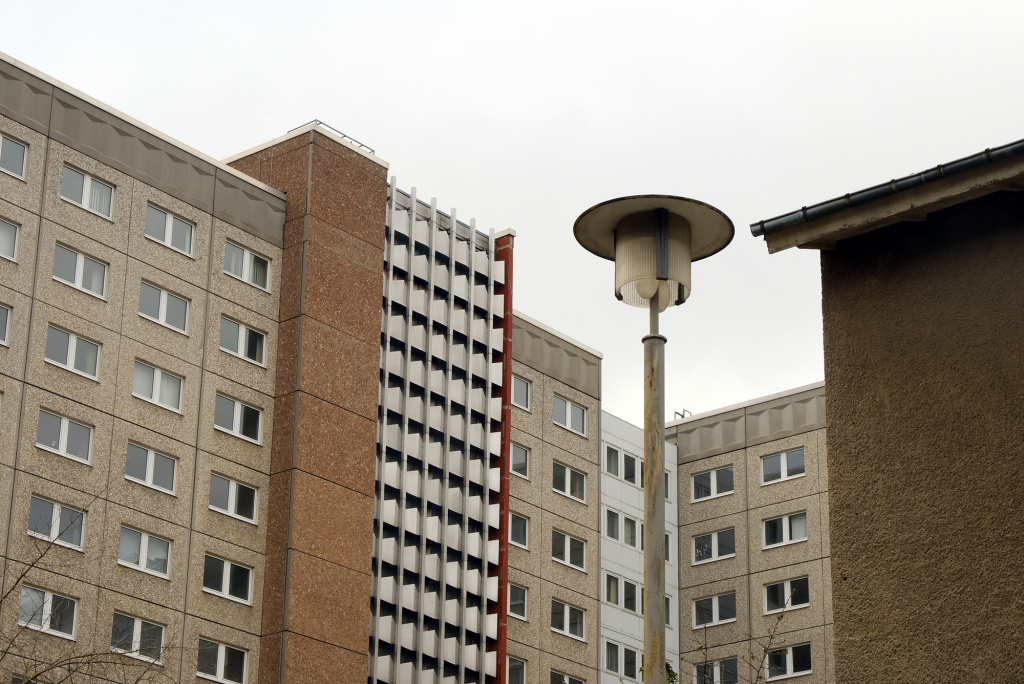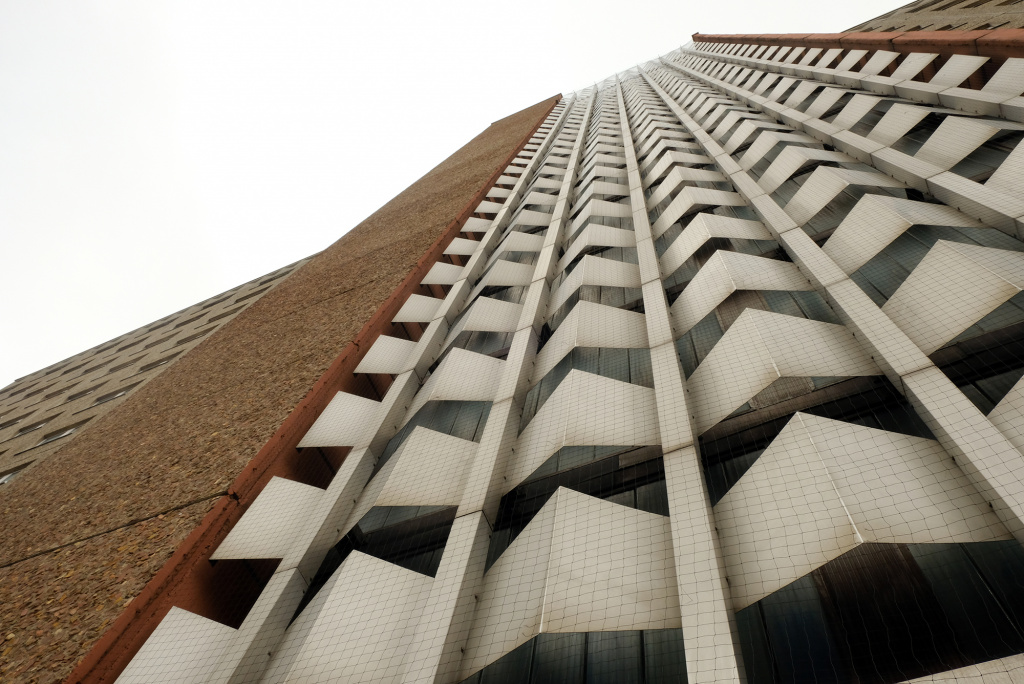7 Berlin hotspots of socialist architecture5 min read
According to various calculations, up to 60% of Berlin’s inner city was destroyed in the Second World War. A lot of living space was needed and new buildings sprang up out of thin air. Buildings like those found in Warsaw, Bucharest, or Moscow were constructed, particularly on the eastern side of the Berlin Wall. However, the architecture of the socialist era cannot be summed up under the term “prefabricated building.” Our partner osTraum selected seven places in Berlin that show the diversity of this socialist architecture.
Spittelmarkt and Leipziger Straße (district “Mitte”)
The 1.5 km long section between Spittelmarkt and the Bundesrat is full of architectural highlights. Starting from the large Coca-Cola illuminated advertising on the roof of a GDR-era residential building directly on Spittelmarkt, the route continues along Leipziger Straße towards Potsdamer Platz. Several high-rise buildings on the left side of the street attract full attention. After the large intersection with Friedrichstraße, you will find the brutalist-cosmic building of the Czech Embassy and the brown glass building of the Bulgarian Embassy.
Alexanderplatz and surroundings (district “Mitte”)
There is nothing left at Alexanderplatz that would remind us of its alleged namesake — the Russian Tsar Alexander I Pavlovich Romanov. After the Second World War, the square and its surroundings were completely redesigned and rebuilt. Numerous highlights of socialist architecture can be found here — the former House of Statistics, which stood abandoned for a long time and has been undergoing complete renovation since 2020; the television tower, which was built according to the same plans as the Moscow Ostankino television tower; the world clock with cities from the former socialist bloc; as well as the beginning of Karl-Marx-Allee right after the House of Statistics with its Kino International and Café Moskau. Incidentally, Alexander I’s mother was Sophie Dorothee Auguste Luise, Princess of Württemberg. Accordingly, he was the cousin of Friedrich Wilhelm III — the King of Prussia.
Karl-Marx-Allee (Mitte & Friedrichshain)
From the Kino International to the Samariterstraße underground station stretches an almost three kilometre long ensemble of various building types. The journey begins with well-kept prefabricated buildings, which still have illuminated advertising from the GDR era on their roofs — advertisements for the Czechoslovakian and Bulgarian automobile industries. This is followed by neoclassical houses, which were intended to be a retrospective of the ancient empires. The architectural style is characteristic of Stalin’s reign. The socialist capitals were to become the capitals of an empire in the period after World War II. Until Stalin’s death, Frankfurter Allee (the eastern half of Karl-Marx-Allee) was called accordingly Stalin Allee — it even had its own Stalin memorial. Similar buildings can be found in Moscow, Vilnius, Warsaw, and many other European cities. Karl-Marx-Allee recently served as the backdrop for the Netflix series The Queen’s Gambit — in the series, however, it was not Berlin that was depicted, but Soviet Moscow.
United Nations Square (Friedrichshain)
In addition to Stalin Allee, Berlin also had a Lenin Square. Today, the square is named after the United Nations. The high-rise building in the middle of the square, on which there is no longer a Lenin monument, is directly connected to the Friedrichshain public park. The park also contains several monuments and statues, as well as a few cafes, from the GDR era. Several snake-like prefabricated buildings were built around the high-rise building, which are now no longer grey-brown but colourful.
Springpfuhl (Marzahn)
The Berlin district of Marzahn will probably be familiar to some. The foundation stone of the modern district was laid in the 1970s at Springpfuhl. Springpfuhl is a district within a district, because residents should not want for anything. Everything is within a five-minute walk — kindergarten, school, doctors, grocery stores, pharmacies, and the S-Bahn — a principle that was applied to many new districts. There is also a small park with a pond here. However, the Sojus cinema has been out of operation for several years, and is increasingly falling into disrepair.
Ernst-Thälmann-Park & surroundings (Prenzlauer Berg)
Ernst Thälmann Park is not usually associated with the Berlin district of Prenzlauer Berg. There is a large Ernst Thälmann monument, which is now a popular graffiti spot, because at night it is quite dark in the park and sprayers can be creative without being disturbed. Ernst Thälmann himself looks very similar to Lenin. The park also has a swimming pool, a school, and several kindergartens. As with Springpfuhl, everything should be within walking distance. The former GDR ice cream café is now home to Berlin’s hardest metal bar — Blackland.
The Stasi Museum (Lichtenberg)
One of the most important locations of the GDR Ministry for State Security was located right here. The outdoor area is now open to visitors 24/7. An exhibition in the inner courtyard shows the history of the GDR and the Stasi. Guided tours are also offered inside the building complex, with the exception of during the Covid-19 pandemic. The site consists mainly of prefabricated buildings that served primarily as offices, but there were also sections that were used for the detention, interrogation, and torture of civilians. The cells can be visited, and one of the locations of the Stasi Records Archive is also located here.
These seven hotspots for socialist architecture in Berlin do not show the full diversity of GDR architecture. Other places that did not make it onto the list, but which osTraum can still recommend, are Neu-Hohenschönhausen, Ahrensfelde, Allee der Kosmonauten, Hellersdorf, Kaulsdorf-Nord, Anton Saefkow Platz, the historic centre of Marzahn, the Berlin-Hohenschönhausen Memorial and the Ernst-Thälmann-Park Planetarium.
This article was originally published in German on 28 February 2021 by our media partner osTraum.





